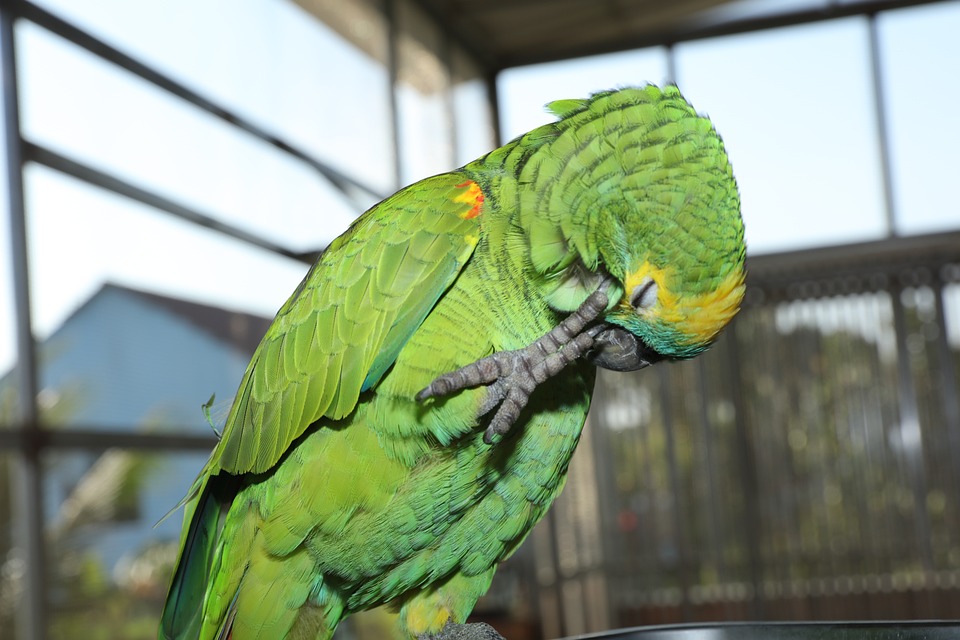Parrots are known for their vocal abilities, but excessive vocalizations can sometimes become a challenge for parrot owners. In this article, we will explore the importance of positive reinforcement in addressing and modifying parrot behavior, specifically focusing on excessive vocalizations. By understanding the underlying causes and implementing effective positive reinforcement techniques, you can provide a harmonious and enjoyable environment for both you and your feathered companion.
Excessive vocalizations in parrots can have various causes. Understanding these causes is crucial in addressing and modifying the behavior. Some potential causes of excessive vocalizations include natural instincts and social communication, boredom or lack of mental stimulation, attention-seeking behavior, and anxiety or stress. By recognizing these causes, you can develop a targeted approach to address them.
Differentiating between normal and excessive vocalizations is essential. While vocalizations are natural for parrots, excessive vocalizations can be disruptive and problematic. Understanding the patterns and triggers of excessive vocalizations can help you identify the underlying cause and develop an effective plan to address the behavior.
Positive reinforcement techniques are key to addressing excessive vocalizations in parrots. Creating an enriched environment is vital. Provide ample toys and interactive puzzles to keep your parrot mentally stimulated. Introduce a variety of sounds and music to keep them engaged. Offering frequent out-of-cage time for exercise and exploration can also help alleviate excessive vocalizations.
Communication and bonding are also crucial in addressing parrot behavior. Spend quality time interacting with your parrot to strengthen your bond. Establish consistent daily routines to provide a sense of security. Use gentle speech and avoid yelling or shouting, as this can increase stress and anxiety in your parrot.
Targeted training and reinforcement techniques can also be effective. Teach your parrot the “Quiet” command and consistently reward and reinforce desired behavior. Avoid punishment or negative reinforcement, as this can have adverse effects on your parrot’s well-being.
Here are some frequently asked questions about addressing excessive vocalizations in parrots:
1. Can I completely eliminate my parrot’s vocalizations? While it may be challenging to eliminate vocalizations entirely, you can successfully manage and reduce excessive vocalizations through positive reinforcement techniques.
2. Are there any medical conditions that can cause excessive vocalizations? Yes, some medical conditions such as respiratory infections, hormonal imbalances, or pain/discomfort can lead to increased vocalizations. It is essential to consult with an avian veterinarian to rule out any underlying health issues.
3. My parrot screams when I leave the room; how can I address this behavior? Separation anxiety is a common cause of excessive vocalizations. Gradually desensitizing your parrot to your absence by practicing short departures and providing engaging toys or treats can help alleviate this behavior.
4. Should I ignore my parrot when they are excessively vocal? Ignoring excessive vocalizations can be an effective strategy if attention-seeking is the underlying cause. However, ensure that your parrot has ample mental stimulation and provide attention and rewards when they are quiet to reinforce the desired behavior.
5. How long does it take to see results when using positive reinforcement? Each parrot is unique, and the time it takes to see results may vary. Consistency, patience, and understanding your parrot’s individual needs are key. With time and positive reinforcement, you should observe improvements in their vocal behavior.
In conclusion, by utilizing positive reinforcement techniques and understanding the causes behind excessive vocalizations, you can establish a strong bond with your parrot while addressing and modifying their behavior. Remember to create an enriched environment, communicate effectively, and employ targeted training methods to encourage desired behavior. With time, patience, and consistency, you can create a harmonious living environment for both you and your feathered friend.









